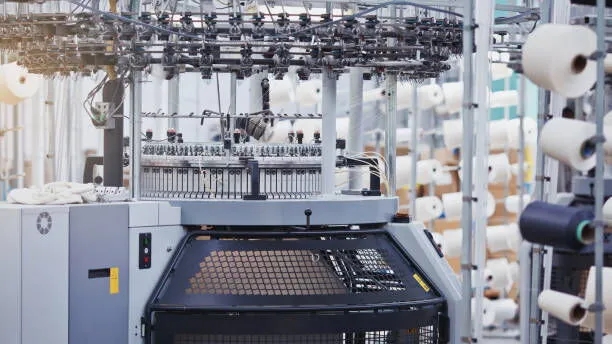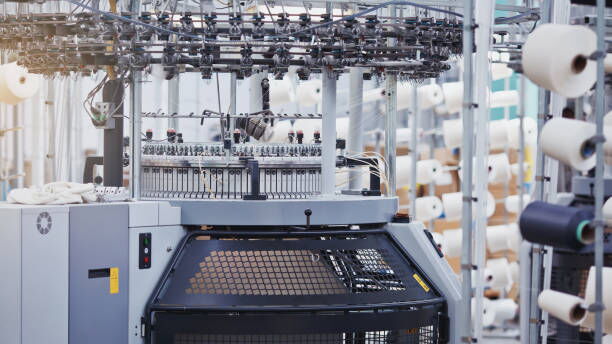No More Mistakes with Flour Mill Machine Manufacturer
Mar 11 2023


In the world of circular knitting, machine precision and component synergy are key to achieving optimal fabric quality, machine longevity, and high production efficiency. Among the numerous critical components that ensure seamless operation, two stand out for their integral roles—the knitting machine pulling-up device, commonly referred to as the rolling machine, and the presser foot. While often overlooked in broader discussions, both components are vital in maintaining tension consistency, synchronizing knitting dynamics, and guiding fabric during the production process.
This article explores the structure, functions, and classifications of these components, focusing on how they support continuous and high-quality circular knitting.

The knitting machine pulling-up device is a key subsystem in circular knitting machinery, responsible for maintaining fabric tension and handling fabric after it has been knitted. Without a properly functioning pulling-up device, even the most advanced knitting machines can experience inconsistent fabric tension, needle damage, and erratic fabric winding—all of which reduce production quality and increase maintenance costs.
The primary purpose of the pulling-up device is to apply consistent and even tension across the fabric as it is being drawn downward from the knitting zone. This tension needs to be finely balanced. If it’s too high, it can overstretch the fabric and wear out the needles prematurely. If it’s too low, it could lead to fabric slackness, poor formation, or curling. By maintaining even pulling tension, the device protects the machine's mechanical parts and promotes smoother operation.
Efficient knitting relies on synchronized movements between the fabric formation and its withdrawal. The pulling-up device matches its withdrawal speed to the rotational speed of the knitting cylinders. This coordination ensures that the fabric is pulled away at the same rate it's being created, minimizing slack or overstretching and helping maintain stitch uniformity.
Another important function is controlling the maximum winding length of the fabric roll. Depending on the type of material, thickness, or pattern requirements, operators may need to adjust how tightly or loosely the fabric is wound. Modern devices enable precise control over these settings, contributing to better productivity and consistency, especially in mass production scenarios.
Depending on the machine setup, production goals, and cost considerations, manufacturers can choose from two main types of pulling-up devices: constant torque electric systems and mechanical systems.
This type utilizes continuous rolling cloth mechanisms powered by electronically controlled motors that deliver constant torque. These devices are commonly found in newer, high-precision circular knitting machines.
Key Features:
Stepless Control: These devices use advanced electronics to allow for smooth and stepless speed control, which is especially valuable when processing different yarn types and weights.
Constant Torque Output: The torque remains consistent regardless of load changes. This provides better load balancing and reduces tension fluctuation, ensuring stable winding.
Simple Structure: The design is relatively straightforward compared to gear-based systems. It is driven by constant torque motors, leading to reliable performance and easier maintenance.
Stable and Efficient Winding: Electric traction systems are known for producing high-quality winding results with excellent linearity, minimizing fabric distortion or irregularities.
Advantages:
Precise tension management.
Excellent stability and responsiveness.
Easier to integrate into automated systems.
Considerations:
Higher initial cost.
Requires electronic maintenance expertise.
Mechanical devices employ gear-based systems to physically adjust the fabric tension through mechanical traction. Operators can manually change gears to achieve different speed levels or winding tensions.
Key Features:
Gear Shift Mechanism: Different gear positions alter the amount of curl and tension. This is suitable for specific product types or traditional manufacturing setups.
Lower Cost: Mechanical systems are generally less expensive to manufacture and maintain.
Manual Adjustments: Operators must shift gears manually to adjust settings, which requires skill and attentiveness.
Advantages:
Cost-effective.
Durable and simple to repair.
Limitations:
Less precise than electric systems.
Tension control is not continuous and can be more inconsistent.
Structure tends to be more complex and susceptible to mechanical wear over time.
In addition to the pulling-up device, another key component in circular knitting machines is the presser foot, which plays a vital role in guiding and stabilizing the fabric as it moves through the machine. While the pulling-up device handles tension and fabric withdrawal, the presser foot ensures that fabric stays aligned and properly positioned for stitching and finishing processes.
The presser foot is mounted on the presser foot bar and can be adjusted according to the thickness of the fabric or the knitting application. It comes in different types based on operational needs.
Ideal for general knitting applications.
Offers straightforward operation with limited contact pressure.
Commonly used for basic fabric types.
Provides extra grip and control, especially useful for thicker or multi-layered fabrics.
Allows for more stable fabric movement and higher accuracy in operations like seaming or piping.
Fabric Guides/Folders: These are often used in tandem with the presser foot to help channel the fabric correctly into the desired position. This is particularly useful in producing complex knitwear or when working with difficult-to-handle materials.
The presser foot is typically equipped with a spring-loaded adjustment mechanism, enabling operators to increase or decrease the pressure based on fabric thickness or desired stitch type. This flexibility helps avoid fabric damage while maintaining a strong hold.
During high-speed knitting, fabric can shift, stretch, or become misaligned. The presser foot counters this by holding the material in place as it passes through the needle zone, ensuring that the fabric maintains its intended structure.
The presser foot simplifies the tasks of operators by supporting several sewing and knitting functions:
Seaming: Holding fabric tightly for clean, even seams.
Edge Piping: Managing narrow fabric strips and edges for precise edge finishing.
Tape Binding: Controlling the placement of binding materials on fabric edges.
Presser feet are subject to wear and breakage, especially in high-volume production environments. Fortunately, replacements are widely available in the market. Regular inspection and adjustment ensure the presser foot continues to perform optimally.
As demand for fast fashion, functional textiles, and technical fabrics continues to grow, the operational standards for circular knitting machines must evolve accordingly. Components such as the pulling-up device and presser foot are essential for meeting higher quality expectations and minimizing machine downtime.
Production Efficiency: Properly tuned pulling-up devices and presser feet reduce errors, increase speed, and minimize fabric wastage.
Fabric Quality: Consistent tension and material control translate into better fabric formation, reducing defects such as uneven loops, curls, or stitch inconsistencies.
Cost Management: Though some advanced devices may have higher upfront costs, their ability to improve efficiency and reduce maintenance ultimately saves money.
The knitting machine pulling-up device and presser foot, while often taken for granted, are at the core of any successful circular knitting operation. Their combined ability to maintain fabric tension, synchronize speed, and guide materials ensures the consistent production of high-quality knitted fabrics.
Whether through modern electric systems offering constant torque control or traditional mechanical setups with gear-driven adjustments, pulling-up devices must be chosen to match production needs. Similarly, the presser foot—whether single or double—should be selected and calibrated based on the fabric and function at hand.
For manufacturers and textile operators alike, understanding these components is not only essential for day-to-day operation but also for achieving greater long-term success in today’s competitive textile industry.
Social Media Marketing Strategies for Beginners
Mar 14 2023
(0) Comments